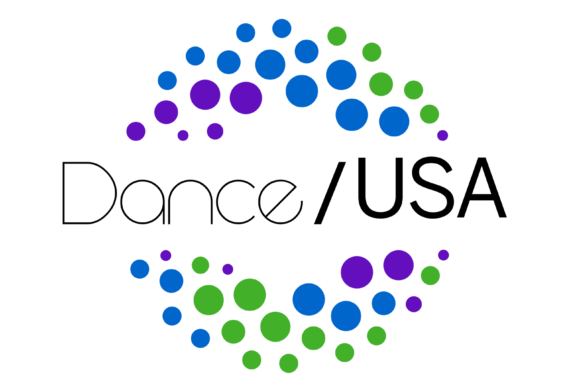Simple Gifts: The Spirit of Sharing
Thanksgiving is almost upon us, and you know what that means. It means that we are in the
homestretch of the Dance/USA Institute for Leadership Training (DILT)
mentorship program. In the spirit of the season, I wanted to share with
you the gifts for which I am most thankful.
World Ballet Day and Sustainable Audiences:
October 1, 2014, was a big day for the dance field. Around the world,
five of the world’s best ballet companies joined together for a full day
of behind-the-scenes live streaming on YouTube featuring rehearsals,
interviews and company class. On the same day, the Wallace Foundation
announced a six-year, $40 million initiative to support building
audiences for sustainability. While I wondered if the planners of the
two events were each aware of the other, I also found myself staring at
the negative space between the two and wondering if anyone else noticed
the solution to be found within. Combine these two events with
Dance/USA’s recently announced “Call for Questions” for next year’s
conference and I figured it would be as good a time as any to posit a
few questions that I know are seldom asked (or answered properly) across
the arts community.
2014 Legislative Forecast
For the first time in a few years, this fall update is not as dire as it has been. Funding proposals for the National Endowment for the Arts are relatively stable and there is no looming fiscal cliff. However, that doesn’t mean that we should take a break on our advocacy. This is a key time to educate our lawmakers about the issues that impact dance and the performing arts as an integral part of moving the needle on policy and legislation. Read on for more on how to do this.
Everybody Knows This Is Now Here:
The Mountain Empire Performance Collective explores ways
of making work beyond geographic limitations. Utilizing both
traditional and contemporary methods of communication, including video chats, telephone calls, letter writing, emails, and
traditional methods of working together face to face, they make works that test the limits of communication and technology. Read Eliza Larson and Rachel Rugh in a collaborative piece that replicates in written form how they choreographically merge ideas and movements across the country. Technology, initially a
means to an end, has become an integral part of the choreography, both in
process and in performance. Read how they do it here.
Performing Tradition, part 2
The past decade has seen the emergence of interesting hybrids between
old and new technologies and aesthetics. An example is the
evolving phenomenon of house concerts — small, acoustic music
and dance performances held in private homes. The ambiance is
informal. Usually the audience is limited; anywhere from 10-20 people,
who contribute a comparatively small fee for the privilege of hearing
music up-close and personal. These events are rekindling what music must have been like when it was enjoyed socially in
people’s homes, and yet they thrive in the era of social media, and are
marketed via Facebook, and captured and shared using Instagram, Vine
and other media outlets.
Performing Tradition, part 1
If there is a single question that bedevils nearly all the dance
communities I have encountered, it is the quest for authenticity. So
many of the dancers and musicians I have worked with talk about
“balancing tradition with innovation” that it feels a bit trite. Countless bios I have
read include some variation on that phrase. And the thing that strikes
me as weird about it is that there is an implicit assumption there that tradition and
innovation are somehow at odds. Read more about building a traditional dance career in the 21st century.
First Steps for Artists in Creating Artist-Driven Archives
The hows and whys of getting started in planning and building your own artist-driven archive.
Choreographing Archives: An Artist-Driven Approach
Traditionally artists have donated their archival
materials to institutional repositories once they reach the final stages
of their careers. But with the advent of technology, the change in archival institutions and funding, this model is beginning to shift as more artists
see the value of holding onto their collections. Read on to learn why this generation of artists is seeking new ways to preserve their materials and how a few have initiated the process.
Michael Kaiser: Exit Interview, part 2
Michael Kaiser, the outgoing president of the John F. Kennedy
Center for the Performing Arts in Washington, D.C., talks
candidly about the state of the dance field, funding, American dance
abroad,
challenges and perceptions, and his love of baseball and baking. In
September 2014, he leaves the Kennedy Center to bring the DeVos
Institute of Arts Management to University of Maryland
joining the College of Arts and Humanities’ Clarice Smith Performing
Arts Center, a leading national arts incubator. This is the second part of his conversation with Dance/USA.
Michael Kaiser: Exit Interview, part 1
Michael Kaiser, the outgoing president of the John F. Kennedy Center for the Performing Arts in Washington, D.C., talks
candidly about the state of the dance field, funding, American dance abroad,
challenges and perceptions, and his love of baseball and baking. In September 2014, he leaves the Kennedy Center to bring the DeVos Institute of Arts Management to University of Maryland
joining the College of Arts and Humanities’ Clarice Smith Performing
Arts Center, a leading national arts incubator.


